In some industries, Design for Cleanability is just a must (food, medical), in all others, you may just want your product to be and maintain clean during its usage. This article reviews traditional and innovative design tips and recommendations.
Contents
To start with a famous joke: “only dirty people need a shower” … while everybody would find it ridiculous on humans, it should be the same on products.
Do not expect your products to be maintained clean because you produced them clean and you ask to take care in the Instruction For Use. Actively design for cleanability and provide the means for it!
Not only in the food and medical industries,
design for cleanability is an expected & due specification
which is part of the product quality perception and usability: your product will not be the hero because they are clean, but if not, will have an immediate negative impact on your market.
Foreword: cleanness versus disinfection
Cleanness has to be distinguished from disinfection:
- Cleanness: absence of deposits of any size (usually visible ones, but grease films or small dust can be invisible)
- Disinfection: absence of livings germs of any king (usually invisible ones, although fungus or similar may be visible)
It is commonly said that
disinfection can NOT be obtained on a non previously cleaned object
Good to know: the industrial cleaning industry refers to the “clean triangle” –> the combined action of the 3 factors: temperature + chemicals + movement –> you can decrease somehow one of the parameters by increasing one or two others. Example: adding movement, jets, or bubbling in a product cleaning bath while decreasing chemical concentration.
Good to know: while most of the dirt gets softer or even more liquid when the temperature rises, starch is one of the rare exceptions which gets harder. So mind your cleaning or disinfection method in this case.
Clean by Design
Do design for cleanability in the first place, instead of cleaning by user effort, by owner effort, or no cleaning at all!
A small, not good, example as a start: a plane ventilation system interface in the passenger area. Although the planar surfaces were cleaned by the company, obviously the recesses areas are … well … we let you judge:

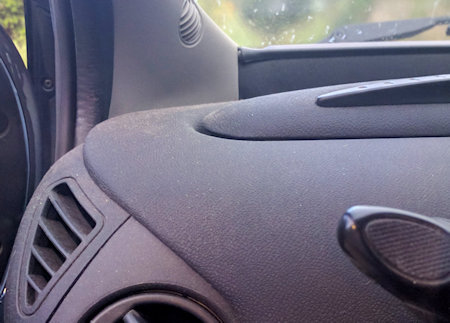
No design for cleanability was obviously taken into account when designing this small radius or plastic surface texture.
Surface Roughness
Whether it is mandatory for the production process or an end-user feature, clearly here some compromises have to be made, as some roughness may be required for the product to look & age well.
Minimal inner radius
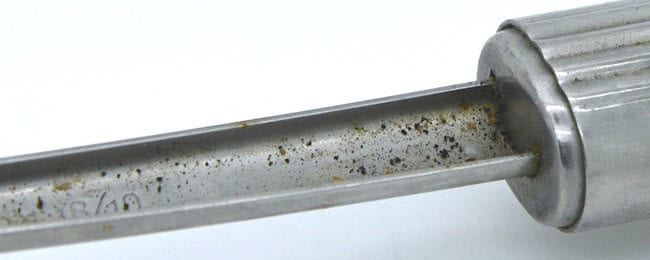

See the example on this metal forming or the plastic molded plane cockpit above of what to avoid.
Even in public restaurants like this silver twisted spoon on the right. The design to cleanness was likely not in the specifications.
The objective is to be accessible to the intended cleaning method. The bigger the better, but as a rule of thumb, the minimum inner radius should conform to:
- ≥ 2 mm if cleaned by automatic CIP (Cleaning in Place) with some jets
- ≥ 3-4 mm if cleaned with some brushes
- ≥ 8 mm if hand cleaned
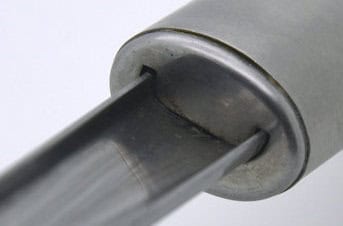
Well-adjusted parts (you think)
Less is More is fully applicable here. Do limit the number of different parts as much as possible; refer to all articles on value analysis for that.
Every gap or interstice between parts will be subject to cleanness problems. In most cases, do not rely on the quality of the assembly, as even a good produced part will have some interstice in the assembly, trapping liquids, debris, or dust.
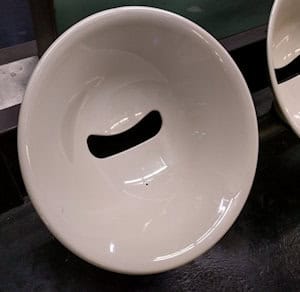
Self-draining design
Seems basic, but one of the most forgotten aspects. It is so easy to involuntarily design a “rain collector”! Dust, dirt & potentially corrosion will just follow.
Particularly for
- medical
- food
- public equipment
- but also individual kitchen or toilet equipment

Accessible or Interchangeable parts
Parts or components but be accessible
In order to maintain them clean easily. This is obtained by either:
- good access: both openings and space between the sub-assemblies if cleaning is required
- single-use components: typically a patient medical probe. The ability to clean is then just avoided. From a manufacturer and designer point of view: it usually requires much more investment and volumes but then generates after-sells
- removable parts to ease its cleaning: -the best practice- Used usually mainly on good home appliances, this can be applied to almost all other industries when some area can not be cleaned or when the total product is either too big or fragile.
Opinion: we believe that although markets have moved over the last decade to more single-use components due to the ease of use and lower initial investment, both ecological aspects so as total ownership cost and feeling of waste will invert this tendency
- more long-lasting glass instead of plastics
- more usage of refill jars, box & containers (end-user food industry)
- back to some metal parts, better integrated with plastic
Design for Cleanability examples (or not)
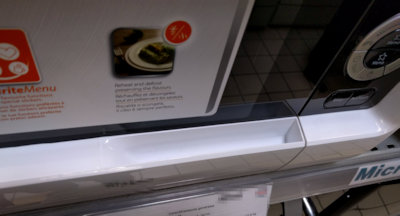
Microwave door handle
A quality microwave with one small Design for Cleanability exception
The handle opening is lean and included/recessed in the door frame. Looks nice and would have a good value analysis.
Also, ergonomics is great (hand width and thickness + function location is visible enough)
… but to notice is dust or liquid collector. A large bottom opening would have likely added some mold complexity and cost but would have permitted to limit the wash, and when done wash easier
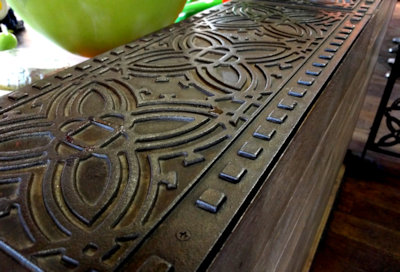
Cast-iron tile
Looks great, thick, heavy, and of high quality … if these 5mm recesses were facing upwards and placed everywhere in that public restaurant. “Designed by recesses” one could say.
A good example where a choice has to be made, in this example visual against the ability to clean and maintain clean (More than 20 meters long of such tiles in that restaurant)
Solutions here: cast some transparent resin in the gaps to have a flat surface? or cover it with glass and seal it on the side? or not seal but remove it from time to time to clean?
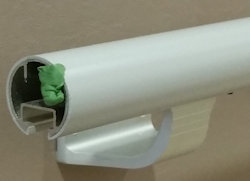
The hospital handrail
A typical example where cleanness is(should?) the 2nd Function, just after “strength to support the patient”.
Have a look at all the detailed pictures in the gallery. Can be challenged:
- the support fixtures to the wall: screw holes, screw openings, spacing around to let an automatic screwdriver and avoid angle. Furthermore, the support shape is machined from an aluminum profile: the shape is made with a recess so that it applies firm to the wall, but that lets an open space on both sides
- tube ends: is it supposed to end like that or are the ends not existing or missing? Nevertheless, prone to dirt and impossible to clean, if not invaded by aliens (chewing gum in this case)
- bottom groove: permits to place the support at any place and to join bar ends without additional machining … at a cost of a completely noncleanable area (yes it seems to be a plastic cover for that groove … just making more non-perfectly closed volumes)
All these can be solved, but for sure at some design cost + possibly some mounting efficiency cost.
Other Examples
Self-cleaning Materials Examples
For sure a very innovative sector to help in the Design for Cleanability, with the best yet to come with nano-technologies. A mix of physics & chemistry, with plenty of technics and applications.
- the window glass used for modern buildings has developed some self-cleaning coatings
- copper has some natural anti-bacterial properties known for a long time. But be careful with some association lobbying on that, as the easy corrosion of pure copper or alloys may supersede this advantage in some conditions. Refer also to the initial remark about disinfection is not cleaning.
- titanium oxide deposits have been demonstrated to have a disinfection property by light catalytic effect. Trending!
- chemicals included in the compound in injected plastics. Mind the change of the plastic properties, so as aging & discoloration of the surfaces.
Important note: mind that it’s not a too-well-mature sector yet. Some aspects of self-cleaning materials are not well documented yet:
- not selecting some germs & letting others prosper even faster?
- not increasing resistance of germs, leading to a future disaster?
- human biocompatibility
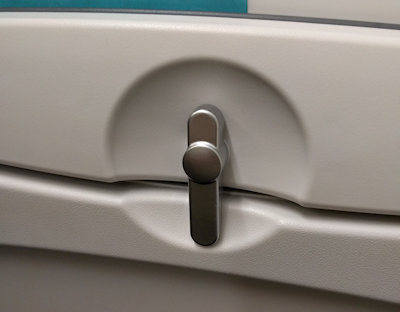
Summary on Design for Cleanability
Here more than elsewhere, forms follow function (fff) and forms make function (maintain clean) are keys.
Most of the time it costs only more to think about the CAD design, and frequently it produces even cheaper products, the final product having fewer parts to produce and fewer parts to assemble!
And last least: use the color trick when acceptable! some mid-dark colors or grey makes dirt not-so-visible. This is of course not the main recommended approach in Design for Cleanability as it is not cleaning but hiding, but could be a complementary way to go in some products.
















